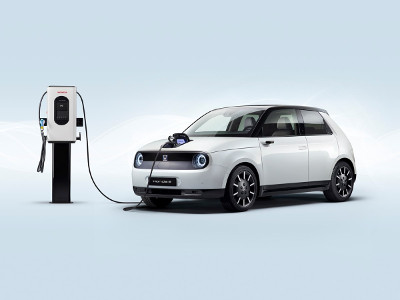Honda unveils production version of the Honda e
Honda has unveiled the final mass production version of its next-generation electric vehicle (EV), the Honda e, at the 2019 Frankfurt Motor Show. Developed with a focus on simplicity in design and usability, the Honda e will meet the needs of modern urban lifestyles and provide a new value to customers through seamlessly integrated connected technologies and exceptional driving dynamics.
Production version of the Honda e
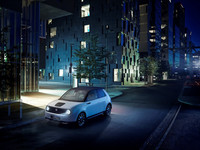
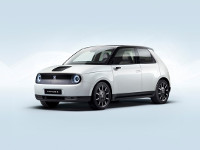
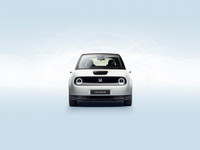
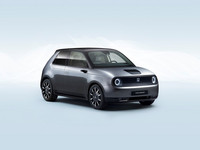
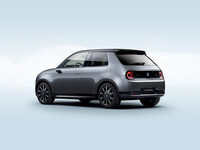
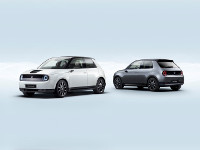
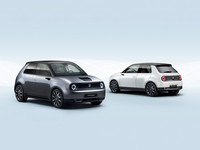
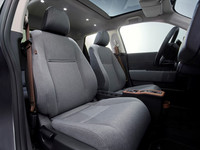
Clean external lines are accentuated by the Side Camera Mirror System that replaces conventional side view mirrors with compact cameras, providing live images to two six-inch screens inside the vehicle. The camera technology, a first in the compact segment, brings significant benefits for styling, safety, aerodynamics and refinement.
The car is distinguished in profile by its smooth styling contours, enhanced by pop-out door handles that provide a seamless look that realises modern and human-friendly design concept. Thanks to the use of the side camera mirror system, designers have been able to create a near-seamless connection between windscreen and A-pillar. Inside, a next-generation five screen full-width digital dashboard and connected infotainment system are incorporated within a relaxing and modern passenger cabin that uses subtle, contemporary materials.
The largest area of the Honda e's full-width digital dashboard is occupied by dual 12.3-inch LCD touchscreens. These act as the primary infotainment displays, presenting a range of applications and connected infotainment services that help the car to seamlessly integrate with the owner's modern urban lifestyle in a living-room like environment. As a result, the driver and passengers - whether the car is driving, parked or charging - can enjoy the same connectivity and comfort with comprehensive connected services accessed through the next-generation full-width interface.
The Honda e is equipped with a high-power electric motor available with two power outputs of 100 kW (136ps)1 or 113kW (154ps)1 , and impressive torque of 315Nm1 . The 35.5kWh battery is one of the most compact in its class yet delivers a range of up to 136 miles1 from a single charge, perfect for every day urban commuting. A fast-charging capability also allows recharge to 80% capacity in 30 minutes1 . On the road, the car delivers a responsive and fun experience, with the powerful electric motor driving the rear wheels for a sporty and connected feel. The Honda e delivers outstanding acceleration from a standing start and will reach 0-60mph in approximately 8 seconds1 .
Connected services and applications accessed via the touchscreen interface can also be activated using voice commands to engage with the Honda Personal Assistant service. The intuitive Honda Personal Assistant is a smart artificial intelligence (AI) facility that uses unique contextual understanding to create natural conversations and provide access to a range of online services.
The unique Honda Personal Assistant is activated by saying, OK Honda
, followed by the question or instruction. Machine learning enables the technology to develop a greater understanding of an individuals' voice over time, in order to deliver more accurate responses.
Away from the car, Honda e owners can enjoy the peace-of-mind of being able to stay connected to their vehicle remotely through the My Honda+ smartphone application.
The mobile service, originally launched in 2017, has been updated to deliver a wider range of functionality, including easy navigation to a detailed vehicle condition report, remote climate control, and security and location monitoring. Additional EV-specific functions include battery charge control and range monitor, while charging station and navigation search results can be sent to the car from a mobile device.
The Honda e is also accessible using a digital key, allowing the car to be locked and unlocked using only the smartphone application.
Honda energy management
Honda has also provided further details of its range of EV charging and energy management solutions. These technologies are developed with the aim of providing EV customers with suitable charging infrastructure for both off-street and on-street scenarios, while improving the efficiency of energy supply by actively managing grid demand.
Honda Power Charger
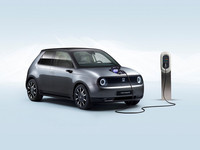
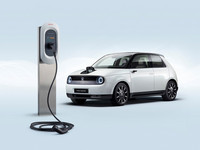
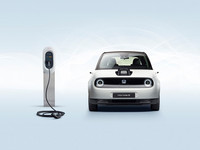
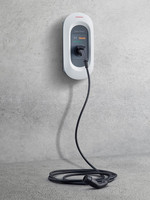
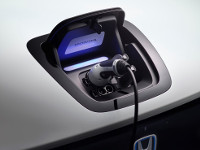
For users who have the option of charging their EV in an off-street scenario, Honda will launch the Power Charger which allows optimal AC charging. The system consists of a charging system that can be wall or pedestal mounted, with a maximum output of 7.4kW (single phase power supply) or 22kW (three phase power supply). This output allows Honda e owners to charge to 100% capacity in 4.1 hours2, assuming a 32 amp supply, significantly faster than through a standard wall socket. The system has a number of comfort and safety features, including:
- Auto recovery function, ensuring the charger will try to restart up to 5 times if mains supply is interrupted, minimising issues of lower than expected charge
- Integration with home-based renewable energy. For example, the maximum permissible amount of charge can be regulated based on a solar photovoltaic array, home battery or heat pump
- Identification via contactless RFID so only authorised persons can use the system
- A charging cable locking mechanism
The Power Charger features a input switch functionality, allowing users to benefit from cheaper energy costs at times of low demand.
Urban charging solution in partnership with ubitricity
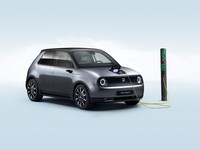
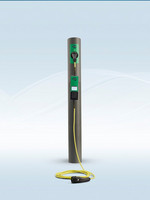
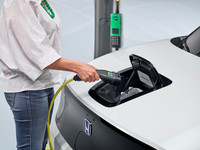
One of the barriers for EV drivers in urban environments is a lack of charging infrastructure. In order to address this, Honda have joined with charging specialists ubitricity. Most Ubitricity charge points are in residential areas where the car is parked overnight therefore the need to move the car when charging is completely avoided, offering the convenience of home style charging to the urban on-street parker.
Honda Power Manager Prototype
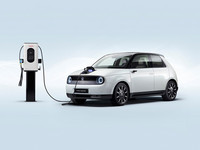
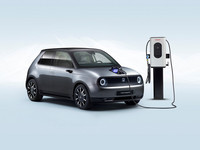
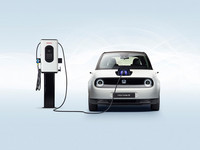
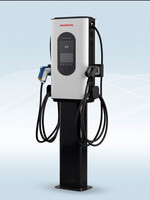
Honda Power Manager Prototype previews a bidirectional system that connects electric vehicles to a smart power grid. This vehicle-to-grid
technology enables the collection and distribution of electricity between EVs and the grid to intelligently balance demand and supply of energy and make better use of renewable sources.
The development of these charging functions will integrate electric vehicles further with existing power networks, allowing energy stored in the vehicle battery to power the home, or to flow back into the energy grid during periods of high demand. The vehicle battery can then be replenished at a time when demand is lower, subject to limits defined by the user.
Honda has developed this technology with bi-directional charging specialists EVTEC Trial activity of this technology will continue before future commercialisation in the early 2020s.
A demonstration of the smart grid system on the Honda stand will show how it is possible to efficiently store energy generated by renewable sources and release it back into the home or sell it back to the grid, presenting revenue opportunities for EV owners in the future.
A demonstration project in London will be using EVTEC trial units with a local authority. Energy can be used to charge EVs, power the buildings, and feed electricity back into the grid when required.
Honda confirmed at Frankfurt that it will bring to market its first commercial energy services during 2020 to align with the launch of the Honda e. UK and Germany are targeted as the first countries for a commercial launch, with further European markets set to follow.
